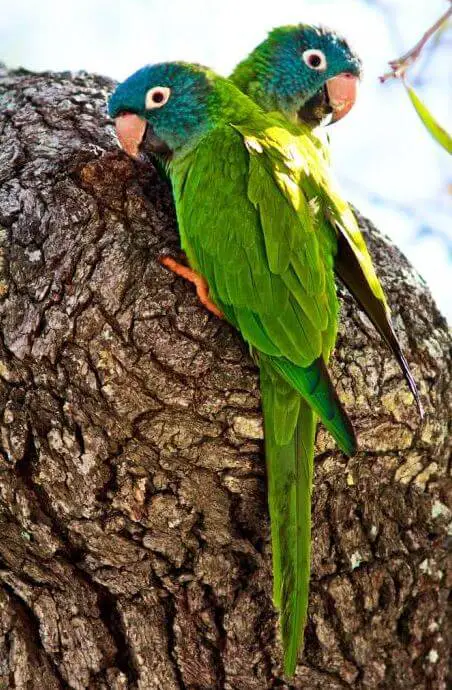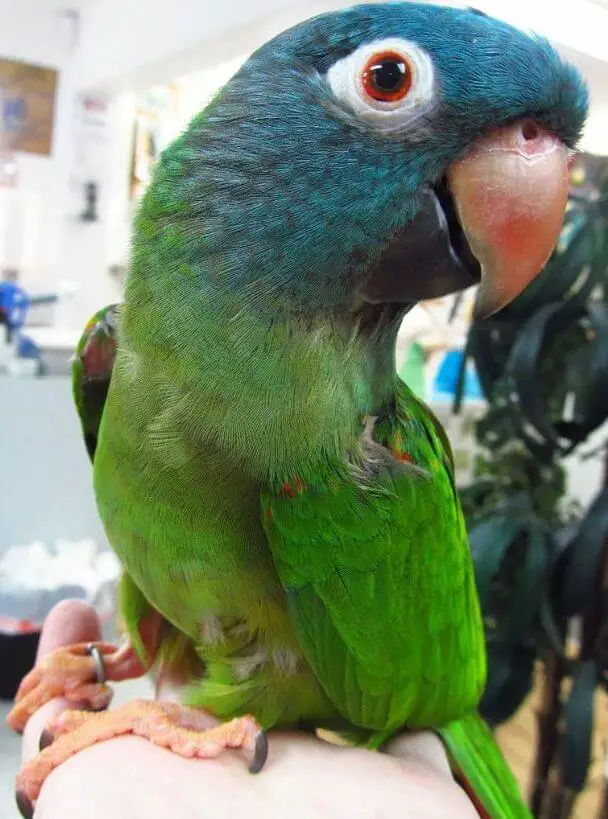Description
It measures approximately 37 cm long and weighs between 140 and 190 g. They have developed the same peculiarities common to members of the Aratinga genus (in which it was included until 2013), including green plumage, long tails, and white eye rings (periophthalmic).
They are predominantly green, with bluish coloration to part of the head, crown, cheeks, and ears.
Breast feathers may be tinted blue, but are more commonly green to yellowish-green. The tail feathers are green at the end, and brown to red-brown below.
Its legs are pinkish-brown with gray-brown nails. The upper jaw is colored, with blackish gray dots.
And the lower jaw is in the young, reaching blackish gray in the second year of life. Some subspecies retain lower jaw coloration into adulthood.
Subspecies
It has numerous subspecies. In Venezuela there is the subspecies Thectocercus acuticaudatus neoxena (Cory 1909), which is endemic to the island of Margarita.
Thectocercus acuaticaudatus acuaticaudatus (Viellot 1818)
Thectocercus acuaticaudatus haemorrhous (Spix 1824)
Thectocercus acuaticaudatus koenigi (Arndt 1995)
Thectocercus acuaticaudatus neumanni (Blake and Taylor 1947
Blue crowned conure lifespan
The average lifespan of Blue-crowned conure can range from 10 to 30 years
Distribution and Habitat

They disjointly inhabit northern Venezuela and northeastern Colombia, interior northeastern Brazil, northern Argentina, and the Paraguay River and Gran Chaco region.
There they live in dry savannas, such as the cerrado, dry and gallery forests, and areas overgrown with cacti or Mauritia palms.
In Colombia and Venezuela they grow at altitudes of up to 400 and 600 meters, respectively, the Bolivian subspecies Thectocercus acuticaudatus neumanni can still be found at altitudes of 1500 to 2650 meters.
Blue crowned conure talking
SOURCE: Stephanie Wilson
Blue crown conure diet
Black-tailed parakeets migrate depending on the regional food supply. When there is a large supply of food, they also come together in large swarms.
Their food, which they forage both on the ground and in the tree tops, consists mainly of seeds, fruits (including cacti), berries (of Condalia species), and nuts, and they occasionally cause damage to fields.
Blue crown conure breeding

Breeding season in Venezuela is March to July, May to August on Isla Margarita, and December in Argentina.
These birds build their nests in tree holes in tall trees, the subspecies Thectocercus acuticaudatus neoxena exclusively uses the black mangrove ( Avicennia germinans ).
The birds usually lay 2 to 5 white eggs, which the female incubates for around 23 days. After about 50 days, the young fledge and leave the nest.
During the breeding season, black-tailed parakeets show increased aggression towards conspecifics and enemies.
The first breeding in captivity succeeded in 1971 in England.
Conservation Status
It is hunted to use as a pet. It is estimated that 80% of the chicks are removed annually and the capture procedures involve the death of several of them.
Additionally, the animal does not seem to be very resistant to captivity and dies easily due to the inadequate climate it receives and the stress generated during its transfer.

